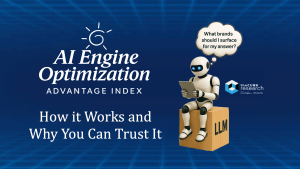Premise
Deploying AI-infused smarts to the Internet of Things (IoT) will require federating deep learning algorithms, training data, and other key assets all the way to resource-constrained edge devices and applications.
Edge-oriented artificial intelligence (AI) is central to the development of the Internet of Things (IoT). Why? Because the type of capabilities being deployed – and expected to be deployed – are too complex for purely procedural software and too time-sensitive for placing human actions in control paths. Unfortunately, edge-oriented software frameworks and standards are in short supply. Developers are forging ahead by increasingly building AI as containerized microservices for deployment to IoT software backplanes. Industry initiatives are beginning to address the need for standards and tools as adoption of AI in the IoT grows. We believe these frameworks will address the need for federated multi-domain management of cloud-based IoT AI functions—such as modeling, training, and deployment–that are executed in diverse platforms, organizations, and clouds.
For IoT AI developers, Wikibon makes the following core recommendations:
- Engage with industry standards group developing IoT AI interoperability frameworks. The OpenFog Consortium’s reference architecture provides broad guidance for architecting AI microservices to be deployed in heterogeneous domains without sacrificing standards-based interoperability.
- Track IoT solution providers’s evolving support for federation of AI to the edge. Recent announcements from Microsoft, IBM, and Google hold out hope that standard approach for IoT AI microservices federation will emerge in the next 2-3 years.
Engage with Industry Standards Group Developing IoT AI Interoperability Frameworks
There are no such standards yet, though it’s likely that industry initiatives will develop those as adoption of AI in the IoT grows. In broader architectural context, containerized IoT AI microservices will likely be deployed into the “deep analytics zone” in cloud-native computing environments consistent with the OpenFog Consortium’s reference architecture. Figure 1 presents this framework. Bear in mind that this zone will in fact pervade every node of the IoT fog, including gateways and all the way to the device/sensor edge.

Figure 1: Fog Computing Reference Architecture (Source: OpenFog Consortium “OpenFog Reference Architecture for Fog Computing”)
Figure 2 illustrates how containerization is supported within the Application Services Layer of this architecture. As Docker/Kubernetes gains traction within cloud-native application environments and those environments span the IoT, they will containerize and orchestrated AI microservices all the way to the federated edge. In so doing, these AI microservices would tap into IoT support layer services (such as databases and middleware) that are themselves packaged as microservices inside their own containers.

Figure 2: Containerization for Application Support in the IoT Fog (source: OpenFog Consortium “OpenFog Reference Architecture for Fog Computing”)
Track IoT Solution Providers’s Evolving Support for Federation of AI to the Edge
Though the standards for federated AI microservices in the IoT are still emerging, some solution providers are moving toward supporting for federated deployment of AI microservices to the IoT’s edge. Table 2 presents three key industry initiatives in that regard.

Action Item. Developers must understand how to embed AI microservices in IoT endpoints – and take the leap where appropriate. Doing so will enable these edge nodes to make decisions and take actions autonomously based on algorithmic detection of patterns in locally acquired sensor data. For developers working cloud-native application development projects that converge AI and the IoT, the key Wikibon guidance is align your efforts with the architectural framework provided by the OpenFog Consortium while closely evaluating the commercial capabilities that Microsoft, IBM, Google, and others are already starting to deliver in their cloud platforms.
Table 2: Industry Initiatives Supporting Federation of AI Microservices in the Internet of Things


